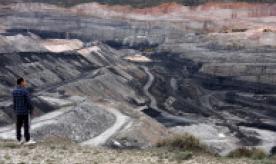The footprints of galamsey in Ghana: The Western Region under the microscope
-
Project documenting illegal gold mining or 'galamsey' operations in the Western Region of Ghana and their environmental impacts.
-
Researchers also outline a costed strategy for reclaiming and closing various galamsey operations.
-
Findings estimate $250 million is required to reclaim lands and water bodies affected by galamsey activities in the Western Region.
Ghana is recognised today as the second largest gold producer in Africa. It is the undisputed mining hub of West Africa, and is dominated by two main gold mining sectors: the large scale mining sector (LSM) and small-scale or artisanal small-scale mining (SSM/ASM). Within the small-scale gold mining sector is “galamsey”, a local term used in Ghana for illegal or unregulated gold mining operations.
Illegal gold mining operations are criticised heavily throughout Ghana due to their detrimental environmental effects, which many believe outweigh any possible economic and cultural justifications. The general public, the media, and academia have raised serious concerns about the negative effects of galamsey operations and have called for its abolishment, and the restoration of the many abandoned mining sites and spoils.
However, to successfully restore an abandoned mine operation it is crucial to have information on its location, scale and scope, abundance, and its operational attributes. As rightly indicated by Resende et al. (2000), the absence of detailed environmental information, or effective environmental characterisation exercises, remains major factors limiting the effectiveness of solutions needed for curtailing illegal mining.
Unfortunately however, the present environmental characteristics of galamsey is poorly understood. Although a number of research works have been completed, and there have been several commentaries in the mass media, none of these systematically and comprehensively provide details on the environmental character of galamsey and present the tools needed for clean-up and site restoration.
A systematic and comprehensive environmental characterisation programme for galamsey operations in Ghana is therefore required for determining the future of both active and abandoned mines, whilst also providing adequate information on pertinent questions including how many different streams of galamsey operations currently exist and which environmental attributes distinguish them from large and small-scale mining.
This study therefore aimed to environmentally characterise galamsey operations in ten selected districts within the Western Region of Ghana to study the operational types, scale and scope of the sites, quantity, location, and land-take of galamsey operations.
This study generated useful data to assist policymakers in formulating comprehensive solutions and restoration programmes for the many impacted sites across Ghana.





